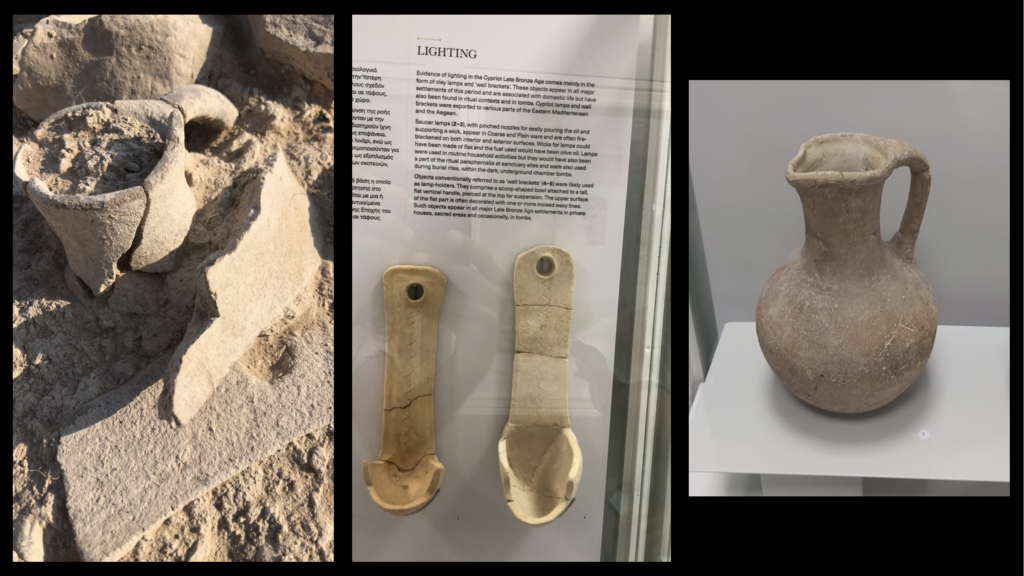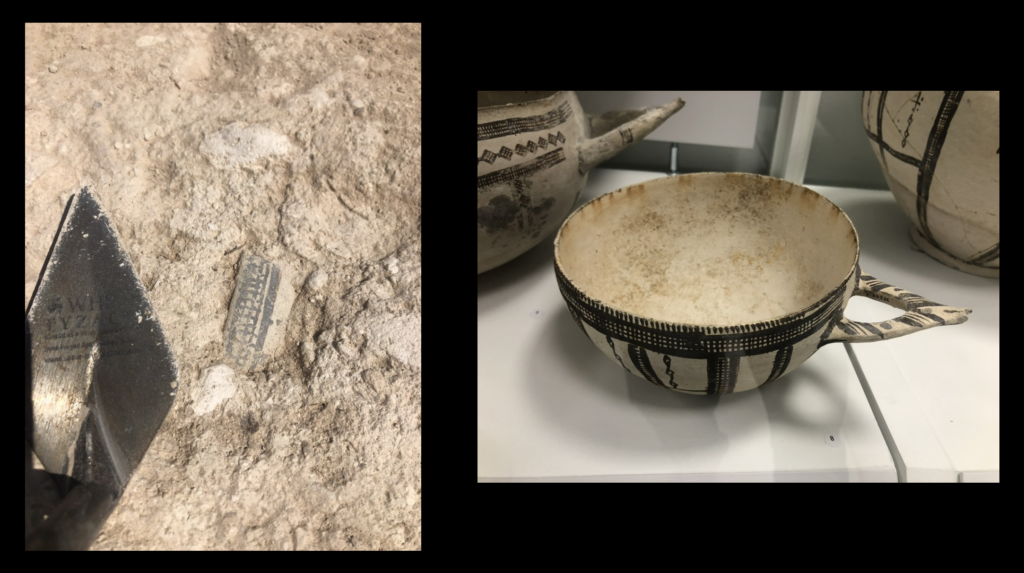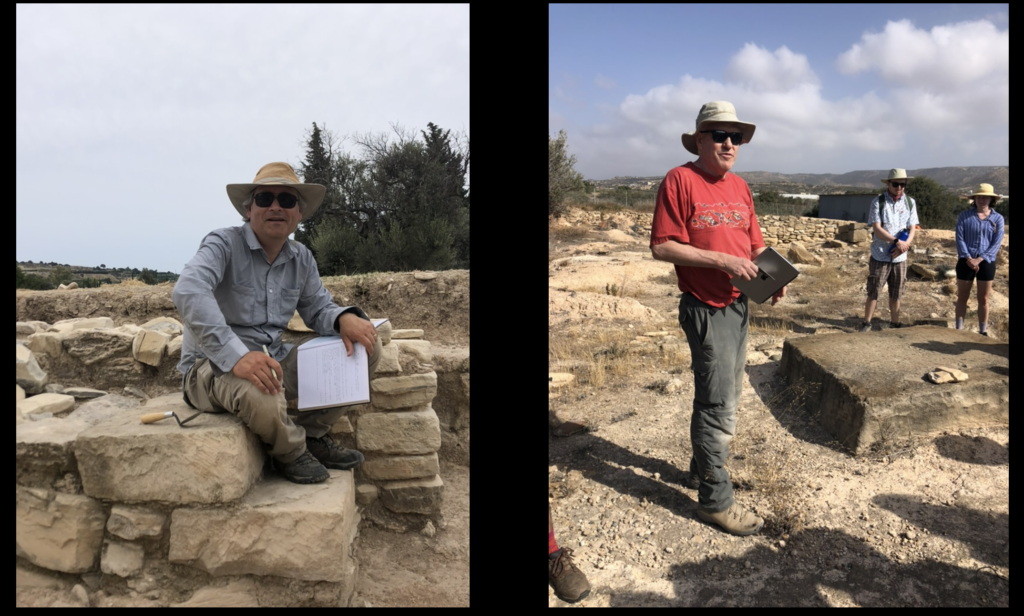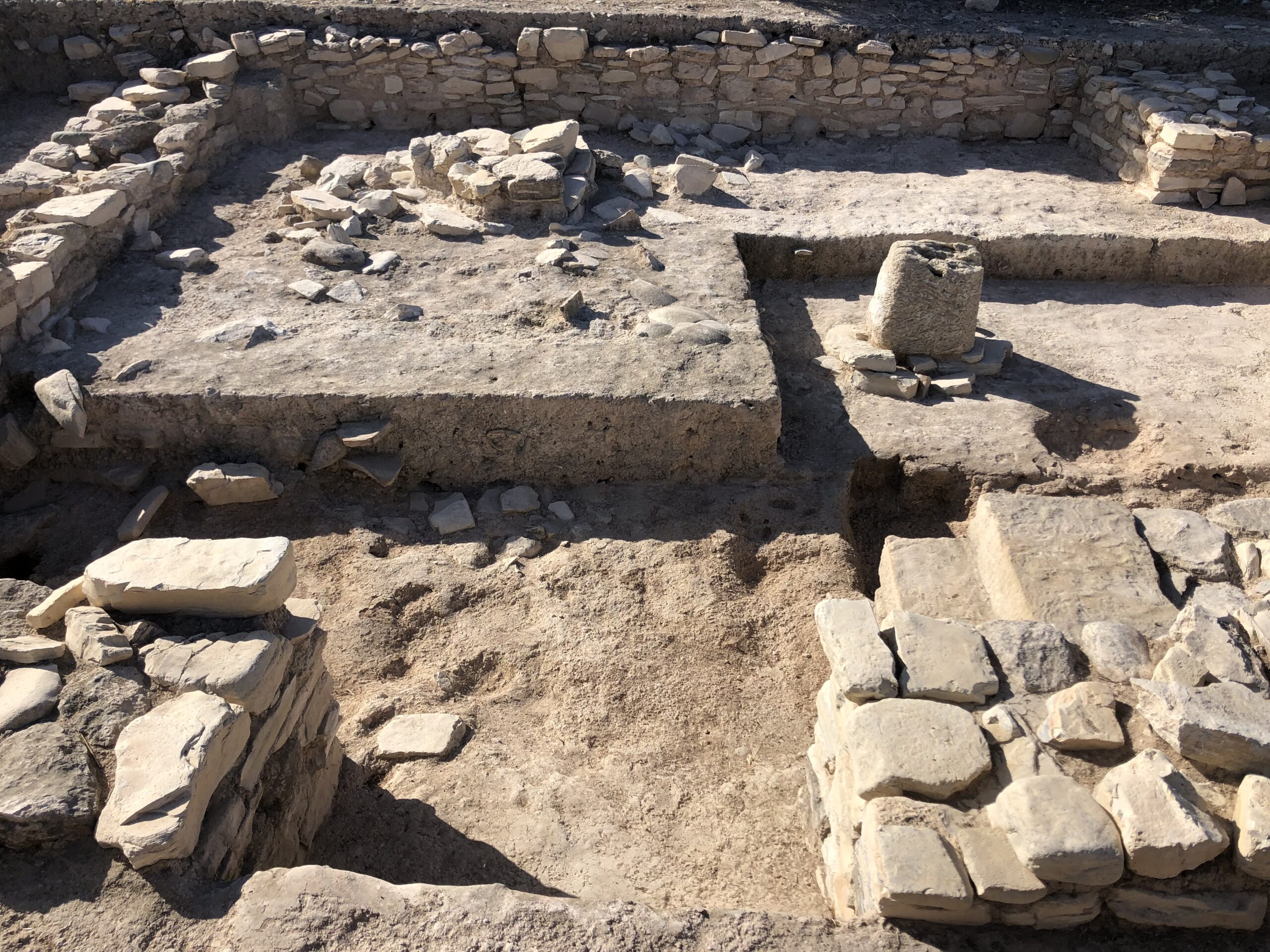The final weeks were a flurry of activity, both on-site and off, with the closing of the 2023 field season at Kalavasos-Ayios Dhimitrios. On-site, we achieved our goals in both trenches and proudly reached our target surfaces. Along the way, we were pleased to uncover further architectural features that may elucidate (or confound!) how the Late Bronze Age Cypriots used these places. Additionally, typical artifacts of the period were excavated, along with some surprises. Pictured below (left) is another example of artifacts from K-AD in situ, alongside their equivalents in the Larnaca District Archaeological Museum. The middle image is a wall bracket, likely used for lighting or incense (though myriad other interpretations abound), and a trefoil-mouth Cypriot Plain Ware jug on the right. While troweling, I often enjoyed casually theorizing with Dr. Fisher on the social implications of the units we were working in; I look forward to his report on this season’s work and seeing the final pictures of the trenches. For previous season interpretations, I recommend the 2019 article “New Approaches to Late Bronze Age Urban Landscapes on Cyprus: Investigations at Kalavasos-Ayios Dhimitrios, 2012–2016,” found here: https://www.ajaonline.org/field-report/3934.

Off-site, I particularly enjoyed attending the 39th annual CAARI Archaeological Workshop. Organized by the Cyprus American Archaeological Research Institute in collaboration with the Cypriot Department of Antiquities and the Archaeological Research Unit of the University of Cyprus, this daylong event featured 24 scholars and archaeologists who shared their work conducted over the last year. On another (sweltering) afternoon, during our lunch break, some teammates and I “kidnapped” our director and visited my family’s village of Asgata. Here, we met my father, cousin, and the village mukhtari, Yiannakis Papaioannou, who led a tour of the fascinating Asgata Olive Press and Flour Mill Museum. The museum contains all of the original, in situ workings of the production of oil and flour that served the village from 1920 to 1986. We noticed many continuities in the proto-industrial technology on display with ancient methods as we know them. Continuing this theme of exploring continuities, we toured the copper mines surrounding Asgata — as the area surrounding Asgata and Kalavasos has evidence of use for mining dating from the prehistoric era through the 7th century CE and more recently from 1925 to 1978. We await the opening of the mining museum in Asgata next summer with great anticipation.
Pictured on the left is CAARI director Dr. Lindy Crewe, lecturing at the workshop on her work at Kissonerga-Skalia, on the western coast of Cyprus. On the right are Mr. Papaioannou, my cousin Silouani, and some of the K-AD team in Asgata.

It was fun to share some of my experiences with you, and I thank you for following along! I also wanted to express my sincerest gratitude to the Archaeological Institute of America—NY Society for their support and to project director Kevin Fisher and field supervisor Sheri Pak for welcoming me to their team.
— Christos Theodorou
Postscript from Istanbul:

I took a short trip to Istanbul and some surrounding archaeological sites in Turkey following the excavation. Staying on the theme of Cyprus, I wanted to highlight this colossal limestone statue of the Egyptian god Bes that greets visitors entering the Istanbul Archaeology Museum. It was found in 1873 near the ancient Cypriot port city of Amathus, near modern Lemesos. It stands just over 4 meters high and 2 meters across! I can’t find any information regarding a secure date for it, and I have seen anywhere from the 6th century BCE to the museum’s claim of 1st-3rd century CE. This statue was found when the systematic removal of antiquities from the island for personal gain and looting to bolster the collections of European and American museums were standard practices. The British Museum, the Ottomans, and many collector/entrepreneurs rightfully fought it out for this one.






